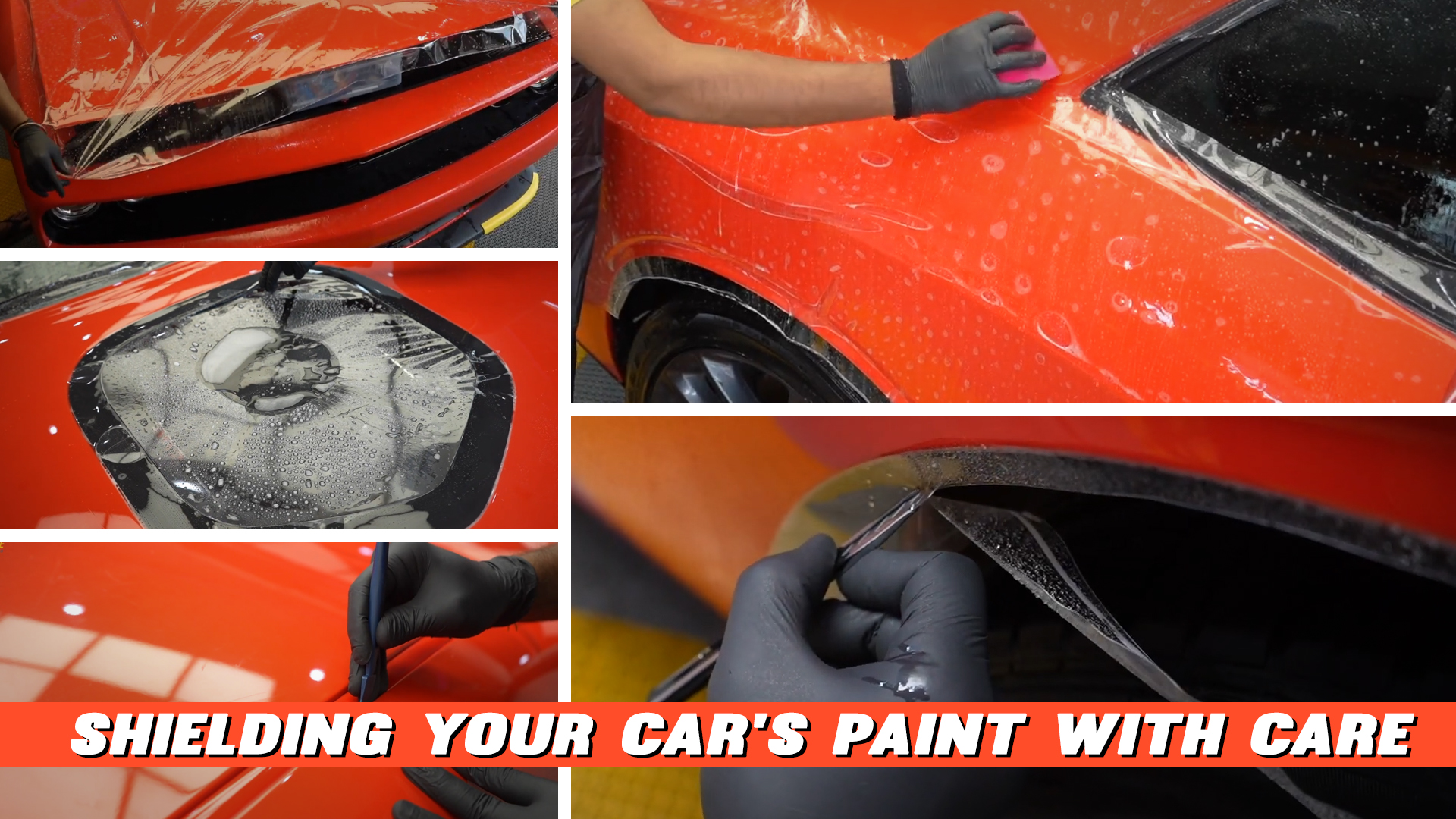Are you tired of worrying about your car’s paint job getting damaged from road debris, UV rays, and other environmental factors? Look no further! Paint protection film (PPF) is a clear, thin layer of film that can be applied to your car’s painted surfaces to protect them from damage. But with so many options available in the market, choosing the right PPF for your car can be a daunting task.
Understanding Paint Protection Film: What You Need to Know
Before we dive into the process of choosing the right PPF, let’s take a closer look at what paint protection film is and how it works.
What is Paint Protection Film?
Paint protection film is a clear, thin layer of film that is applied to your car’s painted surfaces to protect them from damage.
How Does Paint Protection Film Work?
PPF works by creating a barrier between your car’s paint job and the elements. This barrier protects your car’s paint from damage caused by road debris, UV rays, and other environmental factors.
Benefits of Paint Protection Film: Why You Need It
PPF offers several benefits that make it a must-have for any car owner. Here are some of the most significant advantages of using PPF:
Protection Against Road Debris
PPF protects your car’s paint job from damage caused by road debris such as rocks, gravel, and sand.
Defense Against UV Rays
PPF defends your car’s paint job against UV rays, which can cause paint to fade and become brittle.
Easy to Clean and Maintain
PPF is easy to clean and maintain, making it a great option for busy car owners.
Can Be Removed Without Damaging the Paint
PPF can be removed without damaging the paint, making it a great option for car owners who want to protect their car’s paint job without making a long-term commitment.
Factors to Consider When Choosing a Paint Protection Film
When choosing a PPF, there are several factors to consider. Here are some of the most important things to keep in mind:
Film Thickness
The thickness of the PPF can vary from 3 mils to 12 mils. Thicker films offer better protection, but they can also be more visible and may not conform as well to complex curves.
Film Material
PPF is made from Thermoplastic Polyurethane (TPU) material, which is flexible and durable material that provides excellent protection against scratches and scuffs. The best raw material for PPF is Aliphatic, which is a type of TPU that is resistant to UV rays and provides excellent durability.
Adhesive Type
The adhesive used to attach the PPF to your car’s paint can be either acrylic or urethane-based. Urethane-based adhesives are more aggressive and provide a stronger bond, while acrylic adhesives are gentler and easier to remove.
Finish
PPFs can have a glossy, matte, or satin finish. The finish you choose will depend on your personal preference and the type of paint on your car.
Warranty
Typical Warranty Period:
– Most manufacturers offer a warranty period of 5 to 10 years, depending on the type of film and the manufacturer.
– Some premium films may offer a warranty period of up to 12 years.
Warranty Coverage:
– Most warranties cover defects in materials and workmanship, including:
– Yellowing or discoloration
– Cracking or brittleness
– Adhesive failure
– Manufacturing defects
– Some warranties may also cover damage caused by road debris, such as rocks or gravel.
Brand Reputation
Choose a reputable brand that has a proven track record of producing high-quality PPFs.
Price
PPFs can vary significantly in price, depending on the brand, quality, and features. Set a budget and look for a film that meets your needs within that budget. If you are looking for a best Paint protection film installer contact now.
How to Apply a Paint Protection Film: A Step-by-Step Guide
Applying a PPF can be a challenging task, especially if you’re new to DIY car maintenance. Here are some general steps to follow: It’s highly recommended that you contact a professional PPF installer, like FilmShoppee, and please don’t attempt to install the film at home.
- Prepare the Surface: Clean the painted surfaces of your car thoroughly to remove any dirt, dust, or contaminants.
- Measure and Cut the Film: Measure the painted surfaces of your car and cut the PPF to size using a template or a cutting tool.
- Apply the Film: Apply the PPF to the painted surfaces of your car, starting from the center and working your way outwards. Use a squeegee or a credit card to remove any air bubbles or excess water.
- Trim the Edges: Trim the edges of the PPF using a trimming tool or a razor blade.
- Inspect the Film: Inspect the PPF for any air bubbles, or wrinkles.
Get the Best Paint Protection Film for Your Car from Filmshoppee
At Filmshoppee, we offer a wide range of high-quality paint protection films that are designed to provide superior protection for your car’s paint job. Our films are made from the best materials and are designed to last for years to come.



